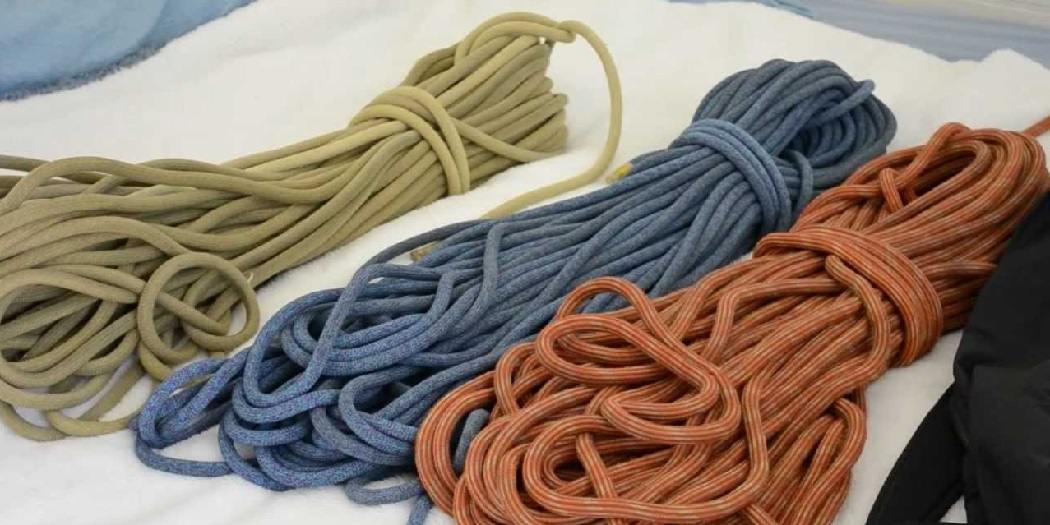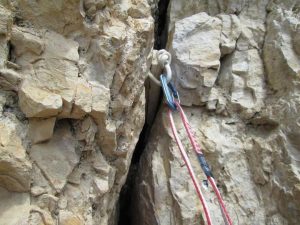A climbing rope is the strong nylon cord used by climbers for protection and safety while climbing. Ropes, the most basic piece of safety gear used by climbers, simply attach climbers to each other and the cliff as well as keep a climber from hitting the ground after a fall. Ropes are a climber’s best friend and his literal lifeline.
Read here our review and buying guide for the best climbing ropes
Climbing ropes have an inner core of woven fibers and an outer sheath of woven fibers. They are very elastic and dynamic, allowing for the rope to stretch and absorb much of the energy of a fall. Climbing ropes are made from 7.5mm to 11mm in diameter, with the thicker ropes the strongest and best for climbing, but also the heaviest.
Thin light ropes are mostly used for alpine climbing in the high mountains where weight is paramount. Ropes under 9mm in diameter are also usually used in pairs. Climbing ropes come in two lengths: 165 feet (50 meters) and 200 feet (60 meters). The 200-foot climbing rope is increasingly become the standard length for American climbing, as it is in Europe. You should only buy and climb on ropes that are specifically designed for climbing activities and are approved and certified by the UIAA (International Union of Alpine Associations)—in other words, don’t go into your local Home Depot to buy a climbing rope!
When to Change Your Ropes?
It’s hard to determine the life of a climbing rope since it is subject to so many influences and variables, including how often it’s used, how it’s stored, what climate it’s used in, and what kind of climbing it’s used for.
The best guidelines are: How does your rope feel and look? And how often do you use your rope?
Less than One-Year Ropes
Ropes wear out fast if you use them all the time. In the summer when we guide at Front Range Climbing Company, we often log 400 client pitches on a rope in a month. Those ropes get trashed fast and retired right away. They’re not subjected to a lot of falls since they’re usually used for top-roping, but all the lowerings tend to wear the ropes quickly.
One-Year Ropes
If you climb a lot, even just a day a week, you can easily wear a rope out in a year. This is especially true if you do a lot of sport climbing with repeated falls and lots of lower offs, both of which take a lot of the stretch out of a rope, or regular weekend climbs and the occasional long route with rappels off.
Three- to Five-Year Ropes
Your rope will last from three to five years if you climb one to four or five times a month; don’t log much air time, lower-offs, or rappels; usually, top-rope with loads on your rope of only body weight, and with climbing sessions of only short periods of time.
Using Old Ropes
You can keep ropes longer than five years, but it’s usually not advisable to use them for climbing. They just age getting stiffer as the nylon degrades over time. If you only use your rope once or twice a year, then you can probably use it for top-roping. But first do visual and manual checks and verify that it’s been stored properly in a cool dry environment and away from household chemicals and auto supplies and oil.













